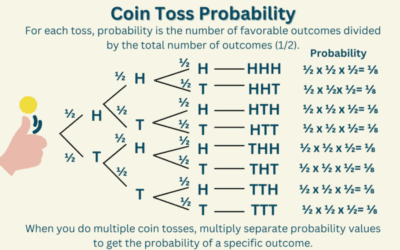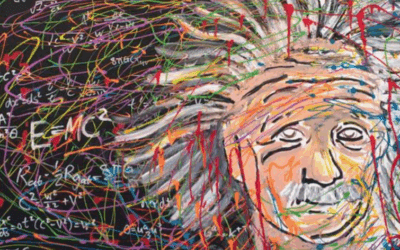The Trauma Healing Power of Brainspotting

Brainspotting is a powerful therapeutic approach that engages the body and brain in a unique way to facilitate healing from trauma and emotional distress. Developed by Dr. David Grand, brainspotting evolved out of his work with EMDR (Eye Movement Desensitization and Reprocessing) and taps into the deep connection between the brain’s visual system, emotional processing centers, and physiological responses.
While the process may vary for each individual, there are some common themes in how brainspotting is experienced somatically and neurologically. By understanding the interplay of physical sensations, brain processes, and post-session integration, we can gain a richer appreciation for this modality’s transformative potential.
The Arc of a Brainspotting Session: From Attunement to Integration
A typical brainspotting session unfolds through a series of distinct stages, each building on the other to facilitate a deep and organic healing process.
- Attunement and Resource Building: The session begins with the therapist guiding the client into a state of relaxed, focused attention. This may involve grounding exercises, mindful breathing, or the activation of a safe place resource. The aim is to foster a sense of presence, stability, and openness to inner experience.
- Target Identification: Next, the client is invited to bring to mind a specific issue, memory, or felt sense they wish to work with. This becomes the “target” for the session. The therapist helps the client attune to the somatic, emotional, and cognitive dimensions of this target, often using the 0-10 Subjective Units of Distress (SUD) scale to gauge intensity.
- Brainspot Localization: With the target activated, the therapist guides the client in a focused visual scan to locate the “brainspot” – the eye position that most strongly resonates with the target. This may be determined by subtle cues like pupil dilation, blink rate, or facial micro-expressions. The spot is typically held with a pointer or other visual anchor.
- Focused Processing: With the brainspot stabilized, the client is encouraged to simply notice and “be with” whatever arises in their present moment experience – physical sensations, emotions, thoughts, memories, or imagery. The therapist maintains a stance of open, non-directive presence, offering occasional gentle prompts to support the client’s inward focus.
- Discharge and Release: As processing deepens, the client may experience waves of intense sensation, emotion, or involuntary movements as the nervous system releases pent-up activation. This discharge is often accompanied by a sense of relief, clarity, or lightness. The therapist helps the client navigate these experiences with grounding and containment strategies.
- Integration and Completion: As the waves of processing subside, the therapist guides the client in integrating any insights, shifts, or new perspectives that have emerged. This may involve verbal reflection, somatic resourcing, or imaginal rehearsal of new behaviors. The session typically closes with a re-evaluation of the original SUD level and a collaborative check-in on the client’s present state.
While the specific pacing and content of each session is unique, this general arc provides a roadmap for the brainspotting journey. By following the client’s organic unfolding with attunement and support, the therapist creates a safe and generative space for deep healing to occur.
The Somatic Symphony: Physical Sensations During Brainspotting
During a brainspotting session, many people report intense physical sensations as the body starts to process and release stored trauma. These sensations can include:
- Temperature shifts (feeling suddenly hot or cold)
- Numbness, tingling, or electrical sensations
- Tightness, tension, or release in specific muscle groups
- Perceptions of heaviness, lightness, expansion or contraction
- Trembling, shaking, twitching or other involuntary movements
In the language of somatic experiencing, developed by Dr. Peter Levine, these physical responses can be understood as the body’s attempt to complete self-protective motor actions that were thwarted or overridden at the time of the original trauma. When faced with overwhelming threat, our instinctive “fight, flight, or freeze” responses are often stifled, leading to a backlog of undischarged survival energy trapped in the nervous system. Brainspotting seems to provide a neurological bridge to safely revisit and release these truncated impulses.
One way to conceptualize this is that the normally lightning-fast physical reactions we have to triggers are being played back in super slow motion during brainspotting. It’s as if the body is hitting the “pause” button on its protective responses, allowing us to track and process the subtle rush of sensation that usually flies under the radar of conscious awareness. By befriending and fully embodying these visceral cues, we may unwind years of accumulated tension and hypervigilance.
This gentle unwinding of chronic threat responses can lead to profound shifts in bodily wellbeing. Many clients report feelings of lightness, unburdening, and a newfound sense of safety and ease in their physical being. Pain syndromes, digestive issues, and other stress-linked disorders often spontaneously improve. In harmonizing mind and body, brainspotting allows the whole organism to let down its guard and focus energy on healing.
The Neuroscience of Transformation: Brain Processes in Brainspotting
While the exact mechanisms are still being researched, there are several compelling theories about what happens in the brain during brainspotting to facilitate such profound healing. Each offers a unique lens on the neurological symphony at work:
Triune Brain Integration:
Proposed by Dr. Paul MacLean, this model suggests the human brain is composed of three semi-independent “layers” that evolved in sequence: the primitive reptilian brain (governing instinct and survival), the limbic or mammalian brain (mediating emotion and memory), and the neocortex (enabling reason, language and conscious control). Brainspotting can be seen as a way to integrate these levels from the bottom up. By starting with the felt sense and reflexive responses of the reptilian core, then engaging the emotive, imagery-based language of the limbic brain, the higher cortical functions are primed to “receive” and consciously process previously immobilized traumatic content. This hierarchical integration may explain the childlike, dreamlike, or transpersonal qualities many people report during brainspotting.
Microglial Activation and Neural Network Repatterning:
Microglia are specialized immune cells found in the brain that prune synapses and modulate neural circuitry. According to the “Angel and Assassin” hypothesis advanced by researchers like Dr. Virginia Blanton, overactivity of these cells following trauma may lead to pathological pruning of cortical networks involved in emotional regulation and cognitive flexibility. Brainspotting, by deeply engaging the visual orienting networks of the subcortical brain, may redirect microglial activity in a way that restores healthy synaptic connectivity and clears neurological “debris” left by exposure to chronic stress. This perspective casts brainspotting as a kind of optimized “brain training” that leverages neuroplasticity – the lifelong ability to grow and reshape neural pathways.
Memory Reconsolidation and Recontextualization:
Classical conditioning models of trauma posit that distress arises from faulty associations between neutral stimuli and danger responses encoded at a neurological level. In other words, reminders of a traumatic event come to automatically trigger the same fear and arousal experienced at the time of original injury, regardless of actual present threat. The emerging science of memory reconsolidation suggests this process is not irreversible. By carefully activating old fear memories in a safe therapeutic context, their synaptic connections seem to become temporarily destabilized. This opens a neurological “window” during which new emotional learnings can be integrated, effectively rewiring the memory network. Brainspotting may facilitate this by allowing traumatic associations to be simultaneously activated and soothed so that more adaptive linkages can be instantiated.
During this neurological reshuffling, some people may experience the emergence of conscious memories, protective responses like dissociation or negative self-talk, or looping thoughts. These can be understood as indicators that deeper patterns are shifting and re-emerging for integration. With the support of a skilled therapist and the brain’s own innate healing intelligence, even intense experiences usually resolve towards a more coherent and easeful baseline.
Ripples of Resonance: Integration After Brainspotting
While much of the “heavy lifting” of brainspotting occurs in session, the brain and body continue to process and integrate long after the office door closes. Most people feel deeply fatigued after a session, as if they’ve just completed a strenuous physical and mental workout. Prioritizing extra rest, hydration, and self-care in the hours and days following is crucial to support the body’s natural healing rhythms.
Sleep is one of the most potent integration aids. The vivid, symbolic or “mythy” dreams many report post-brainspotting can be seen as the psyche’s way of “digesting” the session, allowing neural networks to reconnect in novel and meaningful ways. REM-based memory consolidation also allows cortical regions to distill and generalize emotional learnings so they can be flexibly applied to other areas of life.
Significantly, if traumatic memories do resurface after brainspotting, they are often experienced as neutralized or historicized, without the same “live wire” emotional charge. This suggests that the deeper limbic and somatic memory networks have already shifted, and the cortical autobiographical memory is simply catching up to this new internal reality. In this way, brainspotting facilitates a kind of reverse-engineering of top-down symptom resolution.
Strong emotions, both cathartic and nourishing, may continue to arise for some time as part of this integration process. Waves of grief, anger, or fear are often interspersed with upwellings of joy, peace, love and self-compassion. Allowing such feelings to crest and subside without interference is part of learning to trust the inherent wisdom of the mindbody system. Many find it helpful to engage in expressive arts, journaling, or movement practices to “metabolize” this emotional material.
Synergy and Synchronicity: Integrating Brainspotting With Other Modalities
While brainspotting is a powerful modality in its own right, it also lends itself to creative integration with other therapeutic approaches. Many practitioners find it enhances and accelerates work with a range of populations and presenting issues. Some notable synergies include:
Internal Family Systems (IFS):
Developed by Dr. Richard Schwartz, IFS understands the psyche as composed of discrete subpersonalities or “parts” that interact in patterns of harmony or conflict. Brainspotting can be a potent way to contact and share empathy with wounded child parts, release the somatic burdens carried by overworked managers or defenders, and facilitate Self-led integration of the internal system.
Jungian Depth Psychology:
The mythic, archetypal qualities of the brainspotting trance make it well-suited to Jungian-oriented therapy. Traumatic complexes can be viscerally illuminated and unwound at the level of the personal and collective unconscious. Dreamwork, creative imagination, and active imagination are all deepened by the receptive brain states cultivated through brainspotting.
Somatic Experiencing (SE):
Dr. Peter Levine’s SE paradigm emphasizes the role of the autonomic nervous system in trauma and the use of mindful attention to track and release thwarted survival energies. Brainspotting can be seamlessly woven into the SE process as a way to fine-tune the felt sense, gently titrate exposure to difficult sensations, and contain cathartic releases.
Lifespan Integration (LI):
Created by Peggy Pace, LI uses active imagination and a repetitive timeline protocol to update implicit memories and foster empathic attunement to wounded younger selves. Brainspotting can amplify this process by neurologically entraining an empathic connection between adult and child states and allowing spontaneous healing imagery to arise.
Sensorimotor Psychotherapy:
Founded by Pat Ogden, sensorimotor therapy leverages the bidirectional feedback loops between posture, movement, and emotional processing. Brainspotting can serve as a portal to access frozen or dissociated somatic states and can potentiate sensorimotor sequencing and enactments. Conversely, sensorimotor strategies can help stabilize and ground the nervous system during intense brainspotting sessions.
By meeting the nervous system where it is and harnessing its innate capacity for integration, brainspotting can catalyze and complement many other approaches to trauma resolution and embodied self-discovery. As our scientific understanding of this modality evolves, it is likely that new creative hybrids will emerge to meet the unique needs of each individual on their healing journey.
The Brainspotting Treatment Arc: From First Session to Resolution
While every client’s brainspotting journey is unique, there are some common phases that characterize the process of healing and transformation over time.
Orientation and Resourcing:
In the initial sessions, the focus is on building rapport, explaining the brainspotting process, and helping the client develop internal and external resources to support the work ahead. This may include installing a safe place, teaching self-soothing techniques, and identifying a support network.
Trauma Processing and Desensitization:
As treatment progresses, the client begins to target and process specific traumatic memories, negative beliefs, or emotional triggers using the brainspotting protocol. This phase often involves the most intense sensations and cathartic releases as the nervous system discharges accumulated stress and fear. The therapist carefully paces the work to avoid overwhelming the client’s window of tolerance.
Integration and Embodiment:
As traumatic material is metabolized, the client enters a phase of integration where new insights, narratives, and somatic experiences are woven into a more coherent sense of self. This may involve exploring new ways of relating, setting boundaries, and inhabiting one’s body with greater ease and pleasure. Brainspotting sessions in this phase often have a more spacious, reflective quality as the client assimilates the shifts that have occurred.
Resolution and Resourcing:
As the original trauma targets are resolved and integrated, the focus shifts to consolidating gains and building resilience for the future. This may involve using brainspotting to internalize positive resources, rehearse adaptive coping skills, and explore post-traumatic growth. Sessions are spaced further apart as the client transitions to independent self-care and self-regulation.
Termination and Maintenance:
As therapy goals are met and symptoms abate, the client and therapist collaboratively plan for termination. This involves reviewing progress, identifying any remaining growth edges, and creating a plan for ongoing self-care and relapse prevention. Some clients choose to schedule occasional “tune-up” sessions to reinforce gains and address any new stressors that arise.
While this treatment arc provides a general roadmap, it is important to remember that healing is rarely linear. Clients may move back and forth between phases as different layers of trauma are uncovered and processed. The skilled brainspotting therapist remains flexible and attuned to the client’s unique unfolding, adapting the pace and focus of treatment to meet their changing needs.
Ultimately, the goal of the brainspotting journey is not just symptom reduction, but a profound transformation in the client’s relationship to self, others, and the world. By harnessing the brain’s innate capacity for healing and integrating traumatic experiences, brainspotting can catalyze a shift from surviving to thriving – from contraction to expansion, from fear to love, from fragmentation to wholeness. While the path may be challenging at times, the rewards are often life-altering, as clients reclaim their birthright of embodied presence, resilience, and joy.
Modifications to the Brainspotting Protocol: Adapting to Client Needs
One of the reasons that Brainspotting is growing in popularity with clinicians so quickly is that it works very fast and was designed to have a flexible protocol. While the core brainspotting process follows a structured protocol, there are some well-established modifications that can be made to adapt to the client’s unique needs and nervous system. These include:
Inside Window Brainspotting:
If the client finds maintaining a fixed gaze too intense, the therapist can guide them to find a brainspot within their internal felt sense, without the use of a visual anchor. This “inside window” approach may be particularly useful for clients who are highly dissociative or visually sensitive.
Body Resource Brainspotting:
Instead of starting with a traumatic target, the therapist can guide the client to find a brainspot associated with a positive felt sense in the body, such as a place of calm, strength, or groundedness. Anchoring the process in a resource state can help stabilize the nervous system and build capacity for working with more challenging material.
Dual Brainspotting:
For clients with complex or developmental trauma, it may be necessary to work bilaterally, alternating between two brainspots. Typically this involves finding one spot associated with a traumatic memory and one associated with a resource state. The client is guided to pendulate between the two spots, titrating exposure to traumatic activation. This allows for a gradual, gentle processing of traumatic material.
By selecting an appropriate modification to the standard protocol, the skilled brainspotting therapist can tailor the process to the client’s capacity and optimize the conditions for healing and integration. As always, attunement to the individual client’s experience and careful pacing are essential for maintaining safety and minimizing the risk of dysregulation.
Read More about my experience with Brainspotting.
What does a Brainspotting Look Like in the Eye
Bibliography
Blanton, V. (2021). The Angel and the Assassin: The Tiny Brain Cell That Changed the Course of Medicine. Ballantine Books.
Doidge, N. (2015). The Brain’s Way of Healing: Remarkable Discoveries and Recoveries from the Frontiers of Neuroplasticity. Penguin Books.
Grand, D. (2013). Brainspotting: The Revolutionary New Therapy for Rapid and Effective Change. Sounds True.
Levine, P. A. (2015). Trauma and Memory: Brain and Body in a Search for the Living Past: A Practical Guide for Understanding and Working with Traumatic Memory. North Atlantic Books.
Pace, P. (2017). Lifespan Integration: Connecting Ego States through Time. Lifespan Integration.
Porges, S. W. (2011). The Polyvagal Theory: Neurophysiological Foundations of Emotions, Attachment, Communication, and Self-regulation. W. W. Norton.
Schwartz, R. C. (2021). No Bad Parts: Healing Trauma and Restoring Wholeness with the Internal Family Systems Model. Sounds True.
Shapiro, F. (2017). Eye Movement Desensitization and Reprocessing (EMDR) Therapy, Third Edition: Basic Principles, Protocols,


























0 Comments